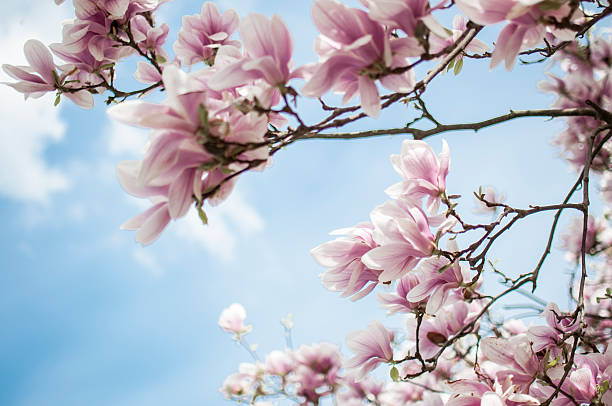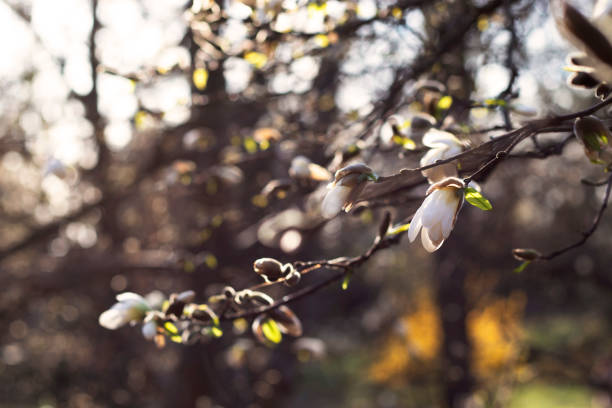Are Magnolia Deer Resistant?
Yes, the magnolia tree is deer resistant in some studies. On the other hand, none of the trees can be considered completely deer resistant. Deer rely on trees to provide the nutrients they require for survival. Magnolia is rated as “B” or seldom severely damaged by deer.
If they cannot locate any trees other than magnolias, they will pause for thought before munching on the twigs and branches of the trees. Magnolia consists of several species, each of which has a different level of deer resistance than the others. In any case, it is always preferable not to take any chances and to safeguard your trees in any reasonably possible way.

Table of Contents
Which Magnolias Are Resistant to Deer?
Almost all magnolia trees are fairly deer resistant, except for a few. Because deer may eat some plants when hungry, it is impossible to determine certain plants’ full level of resistance. On the other hand, the Japanese magnolia and the saucer magnolia are known to be extremely deer resistant. Southern magnolias have a strong fragrance that deters deer from coming near them.
Due to the small twigs of the sweet bay magnolia, which attract deer like a moth to a flame, it has less resistance to deer attack.
How Can You Tell if Deer are eating your Plants?
The most popular thing for gardeners to do first in the morning makes themselves a fresh cup of coffee and check on their trees.
Suppose your garden is destroyed one morning, as heartbreaking as it may be, before blaming the deer. In that case, you must first determine who is responsible for the destruction, as this will aid in the prevention process for the following morning.
It is not difficult to determine whether or not deer are consuming your plants. The following sections explain the telltale signs that a deer has destroyed your garden in-depth.
A deer has a hard palate on its upper jaw, making it look like it has jagged edges. In this case, deer do not eat the leaves but tear apart the plant parts, leaving jagged edges behind them.
Despite its age, the classic footprint identification method never goes out of style. A deer will leave a heart-shaped print on the ground if the ground is soft. It leaves a cloven hoof print distinguished from the rest of the herd during identification.
Deer are repelled mainly by flowering plants with strong fragrances, which is why they destroy them. When a deer is hungry, you never know what it will eat or rely on if the plants with strong fragrances have been left behind. It’s a sign that the deer feast is also about to begin.

Is It True That Deer Like To Eat Magnolia Trees?
Deer indeed eat Magnolia tree parts. On the other hand, Magnolia trees are well-known for their resistance to deer attacks. It’s no secret that deer are attracted to a tree’s twigs, leaves, and buds. In the area where deer can gain access to your magnolia trees, it’s important to take the necessary actions to protect them.
In particular, magnolia trees and their leaves attract a lot of deer. It is possible to find deer-resistant varieties of magnolia trees.
The Jane magnolia tree is beautiful, also known as the tulip tree. Midway through April, the Jane magnolia tree’s mesmerizing tulips bloom.
Because deer love to eat the leaves of trees, even if the trees are relatively deer-resistant, they aren’t completely deer-proof.
Magnolia trees in the South have fragrant, creamy white flowers. Magnolia trees in the southern hemisphere have a reputation for being deer resistant because deer tend to avoid areas with strong scents.
Star Magnolia and Ann Magnolia trees are also resistant to deer. A deep pink magnolia called Ann, and a white magnolia, called Star, are two different types of magnolia.
The saucer magnolia, another common name for the Japanese magnolia, is notable for its deer resistance. In addition, the flowers are a lovely shade of pink. Sweet bay magnolia’s small twigs are a favorite snack of deer, so it’s no surprise that it’s the least deer-resistant of the bunch.
The little Gem Magnolia has been proven to deter deer. Its white flowers have a reputation for repelling insects and diseases.
How to Prevent Deer from Eating Your Magnolia Tree
When a gardener wakes up one fine morning and goes outside to care for their plants, they are met with the devastating realization that their plants have been turned into mulch.
A person can take precautions to keep deer from feasting on their magnolia trees before coming across that dreadful sight in the first place. However, even though magnolia trees are generally deer resistant, you can’t predict what a hungry deer will eat when it’s in the vicinity of your property.
Because it has small twigs that can be easily ripped apart by deer, the sweet bay magnolia is a very tempting plant for them to consume.
4 Ways To Prevent Deer From Eating Magnolia Tree
Repellant Sprays: There are various repellant sprays available on the market to keep your plants safe from pests. Moreover, the chemicals do not harm the plants while keeping the deer away from the crops. If you don’t want to use chemical repellants, you can make your repellant sprays in your home. In this situation, rotten eggs are extremely beneficial.
Fragrance-In addition to using strong fragrances in your garden, you can also grow a fragrant tree in front of it. Strong scents harm deer behavior. Predator’s urine can also be used to keep the deer away. There is a commercial supply of predator urine.
Sensor-If, a deer tries to enter your garden, place censors around the perimeter to scare it away with a loud noise. It’s a little pricey, but it’s worth it.
Fencing-Deer can be kept out of your yard most effectively with the use of fencing. When it comes to deer, it’s unlikely they’ll be able to get past an 8-foot-tall metal fence. It’s also a great deterrent for other animals.
What Other Animals Eat Magnolia Trees?
The magnolia trees are primarily attracted to insects such as beetles, bumblebees, leafhoppers, flower flies, and various types of stink bugs, among other things. Additionally, they attract a variety of wildlife, including opossums, squirrels, wild turkeys, quail, and other birds.
The nutritious pollen and pleasant nectar of the magnolia tree attract insects, attracting more insects. The beetles are primarily attracted to the flowers because of their beauty and the sugar in the starch.
The pollen produced by the magnolia tree contains a high concentration of protein, making it particularly appealing to beetles and other insects.
The animals are particularly fond of the leaves, buds, and twigs of trees because they can eat them whole. Wildlife is drawn to the environment because of the numerous benefits that magnolia trees provide to the environment.
It’s always a great idea to keep them protected in a garden to keep any animal or insect from accessing them.
